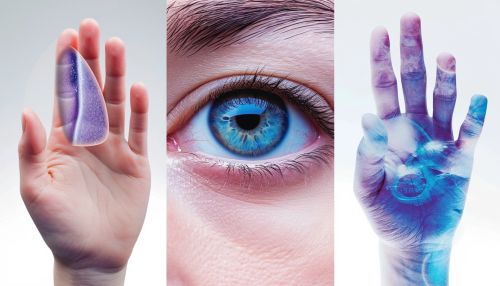Sensory modalities
Introduction
Sensory modalities are the ways that information from the world is perceived by the body. These modalities are typically divided into five main categories: vision, hearing, touch, taste, and smell. However, there are also additional modalities that are less commonly discussed, such as proprioception (the sense of body position), thermoception (the sense of temperature), and nociception (the sense of pain). Each of these modalities is processed by specific receptors and pathways in the body, leading to the perception of different types of sensory information.


Vision
Vision is perhaps the most complex of the sensory modalities, involving multiple parts of the eye and brain. Light enters the eye through the cornea and is focused by the lens onto the retina, where it is detected by photoreceptor cells called rods and cones. Rods are responsible for vision in low light conditions, while cones are responsible for color vision and detail. The information from these cells is then sent to the brain via the optic nerve, where it is processed in the visual cortex to create the perception of sight.
Hearing
Hearing, or audition, is the sensory modality that allows us to perceive sound. Sound waves enter the ear through the outer ear and cause the eardrum to vibrate. These vibrations are then transmitted through the middle ear to the inner ear, where they are detected by hair cells in the cochlea. The information from these cells is then sent to the brain via the auditory nerve, where it is processed in the auditory cortex to create the perception of sound.
Touch
Touch, or somatosensation, is the sensory modality that allows us to perceive pressure, vibration, and texture. This modality is mediated by mechanoreceptors in the skin, which respond to different types of mechanical stimuli. The information from these receptors is then sent to the brain via the somatosensory nerves, where it is processed in the somatosensory cortex to create the perception of touch.
Taste
Taste, or gustation, is the sensory modality that allows us to perceive the five basic tastes: sweet, sour, salty, bitter, and umami. This modality is mediated by taste buds in the tongue, which contain cells that respond to different types of chemical stimuli. The information from these cells is then sent to the brain via the gustatory nerves, where it is processed in the gustatory cortex to create the perception of taste.
Smell
Smell, or olfaction, is the sensory modality that allows us to perceive odors. This modality is mediated by olfactory receptors in the nose, which respond to different types of chemical stimuli. The information from these receptors is then sent to the brain via the olfactory nerve, where it is processed in the olfactory cortex to create the perception of smell.
Other Sensory Modalities
In addition to the five main sensory modalities, there are several others that are less commonly discussed. These include proprioception, the sense of body position; thermoception, the sense of temperature; and nociception, the sense of pain. Each of these modalities is mediated by specific receptors and pathways in the body, leading to the perception of different types of sensory information.
